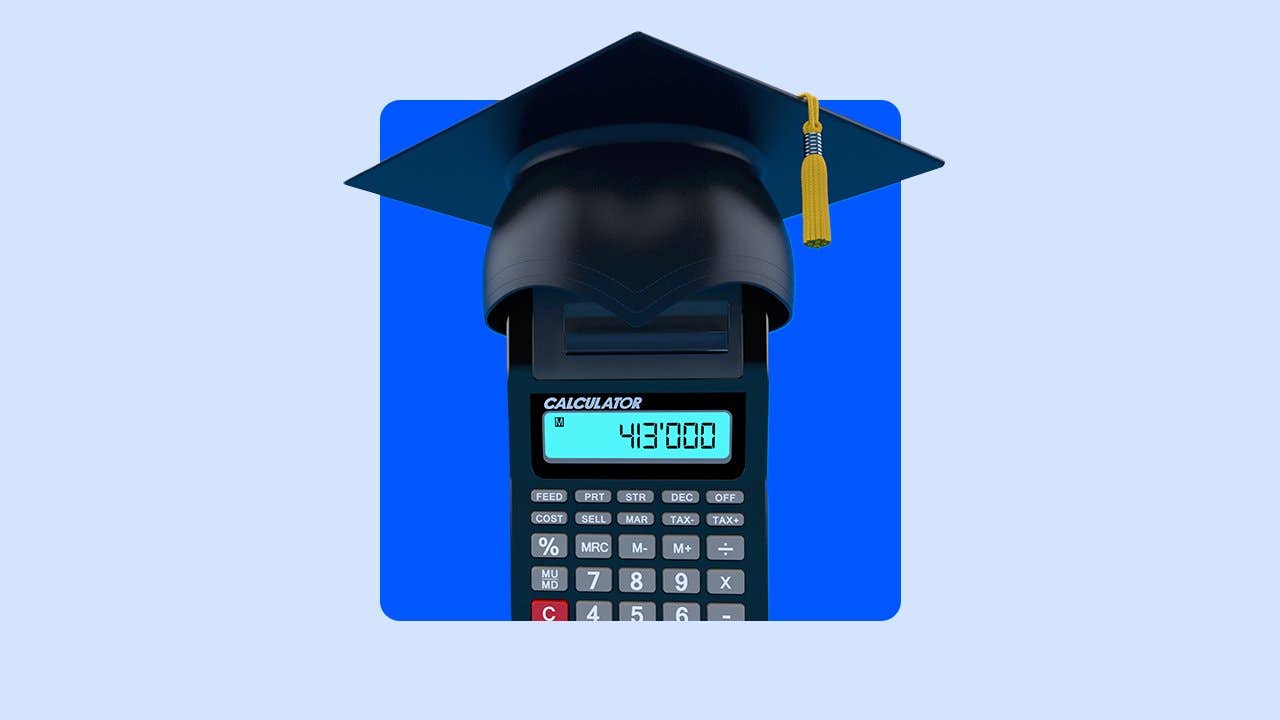How to calculate student loan interest

Key takeaways
- Comparing offers and rates is important before applying for a student loan.
- Federal student loans have a fixed interest rate, while private loans have fixed or variable rates.
- Interest on student loans can begin accruing immediately and can be capitalized, increasing the total amount owed.
- Student loan interest may be tax-deductible, but the amount eligible for deduction is based on modified adjusted gross income.
Before you take out student loans to pay for the costs of higher education, it’s important to understand the impact interest has on the money you borrow. Taking the time to crunch the numbers ahead of time can help you make an effective budget and prepare for post-graduate monthly payments.
The interest on federal student loans for undergraduates is set each year. Student loan interest rates accrue daily for federal student loans, but when figuring out how much interest you need to pay, student loan interest is calculated monthly.
For the 2024-25 school year, the interest rate is 6.53 percent, but private student loan rates generally depend on the lender, ranging from just over 4 percent to 26 percent. To find your cost, factor in the loan’s daily interest rate, outstanding bills and the number of days in a billing cycle.
How is student loan interest calculated?
Student loans can have simple or compound interest. Most student loans are calculated using a simple interest formula. This formula essentially multiplies three factors: your student loan’s daily interest rate, outstanding loan balance and the number of days in your billing cycle.
Most borrowers have federal student loans, which have a fixed interest rate. Private student loans can have either a fixed or variable interest rate. If your loans have a variable interest rate, interest will fluctuate throughout your loan, so you’ll have to readjust your calculations periodically.
Though less common, some lenders charge compound interest. In other words, you’re charged interest on the principal along with any unpaid interest. If that’s the case with your student loans, you’ll likely have a higher total interest charge.
The process of calculating your student loan interest takes three steps:
1. Find your daily interest rate
Divide the annual interest rate on your student loan by the number of days in a year (365). For example, if you borrow $10,000 with 6 percent annual interest and a standard repayment term of 10 years, that calculation would look like this:
Daily interest rate = annual interest rate / number of days in a year = 0.06 / 365 = 0.000164, or about 0.016 percent in daily interest
2. Determine your daily interest accrual charge
Multiply your daily interest rate by your outstanding loan balance, or principal balance, of $10,000. This will determine your daily interest accumulation rate:
Daily interest accumulation rate = (daily interest rate)(outstanding loan balance) = (0.000164)($10,000) = about $1.64 in daily interest
3. Calculate your monthly payment
Multiply your daily interest by the number of days in your billing cycle. Let’s assume that you’re billed on a 30-day cycle. To calculate your monthly payment, you’d make the following calculation:
Monthly payment = (daily interest)(number of days in a billing cycle) = ($1.64)(30) = about $49.20 in total monthly interest
When does student loan interest start?
Student loans are either subsidized or unsubsidized. Many are unsubsidized, where interest starts accruing immediately after loan funds are disbursed. You often don’t have to start making payments until six months after you graduate or drop below half-time enrollment, but any interest that accrues before that will be capitalized, or added to your principal balance.
The exception here is Direct Subsidized Loans, a type of federal student loan offered to students who can demonstrate financial need. With this type of loan, the government covers interest charges during school, the grace period and deferment periods. Because of this, interest technically won’t start until you enter repayment after the grace period.
What is capitalized interest?
There are cases when paused interest will be added to the principal loan balance you are responsible for paying. When this occurs, it is known as interest capitalization.
In such cases where you aren’t on the hook for loan payments until after you leave school, interest still accrues on your debt while you’re enrolled. This interest capitalization increases your outstanding loan balance, and then interest is charged on the new, larger amount owed.
To avoid interest capitalization, you can start paying your student loans while in college. It’s not required, but it could save you more money in the long run when it comes time to repaying those student loans. Some private lenders even discount your interest rate if you choose interest-only payments during school.
Does student loan interest compound daily?
Most borrowers will be met with simple interest loans rather than compounding. This goes for all federal and most private loans. But there are specific situations where federal student loan borrowers will have compounding interest. The most common is during student loan deferment. Following that period, interest still builds on the amount that was borrowed.
Unlike simple interest, compound interest is charged on both your balance and the unpaid interest that accrues over time.
Is student loan interest tax-deductible?
Yes, you may deduct from your taxable income the lesser of $2,500, or the amount of interest you paid during a calendar year. However, the deduction is gradually decreased and phased out entirely based on your modified adjusted gross income (MAGI). Interest is deductible for those whose MAGI is less than $90,000 or less than $185,000 for those who file jointly.
AGI is your gross income with certain tax deductions. MAGI is your gross income without certain tax deductions.
Bottom line
If you are considering borrowing money for school, the next step is to shop around to find the best student loan for you. Comparing offers and rates is a crucial step before applying for a loan to ensure you get the best terms and interest rate.
You can use a student loan calculator to estimate how long it will take you to pay off your desired loan and to calculate your student loan interest. It’s also always beneficial to speak with a financial advisor about creating a budget that works with your interest rate and student loan type, especially if you’re borrowing a private loan.





